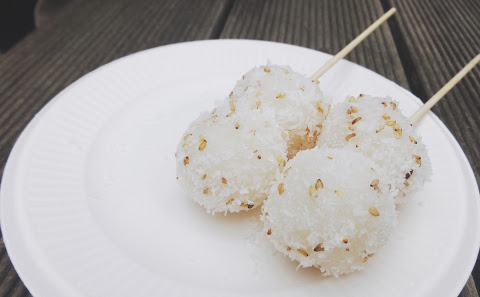I’ve been wanting to go and see the famed momiji trees in this shrine at the earth fort called “Odoi”. And so when I saw the news that today was the peak time to see the momiji in Kitano Tenmangu, I immediately planned my visit. There was an entrance fee of 700 yen which included a tea and a snack at the end of the route.
It was my first time to see many momiji at its peak of kouyou so I was really awestruck at the colorful display of leaves. Everywhere you see was like a painting with hues of reds, oranges, yellows and some light greens! The shrine’s bright orange constructions even exudes a rather unique atmosphere. I also liked how you can view the leaves in the canopy and at the bottom part of the garden.
The tea was probably houji-cha while the sweet had a characteristic ginger taste.
Actually, the Kitano Tenmangu is more popular for its ume or plum blossoms but they’re not in season now. They will probably bloom by around early February. Interestingly, I’ve read from the shrine’s Facebook site that there were already some ume blossoming which is unusual. So I checked the ume trees after momiji viewing to see if it’s true.
So there were really some early bloomers… nice! But I will come back again for more.
